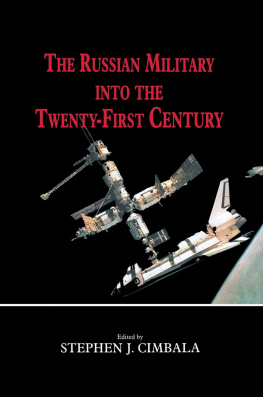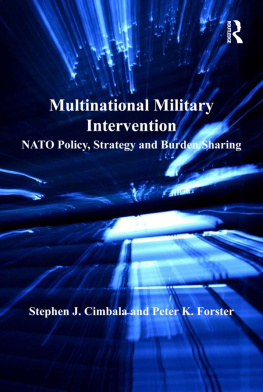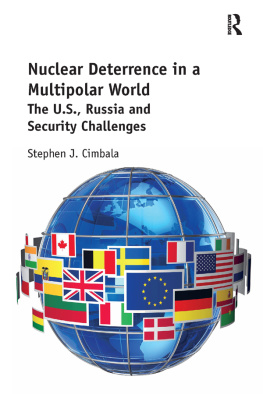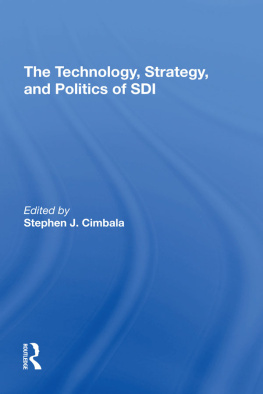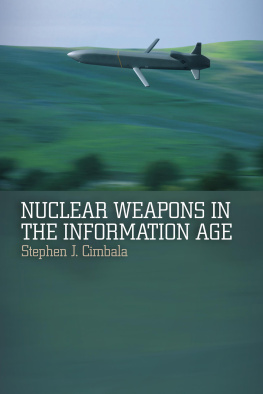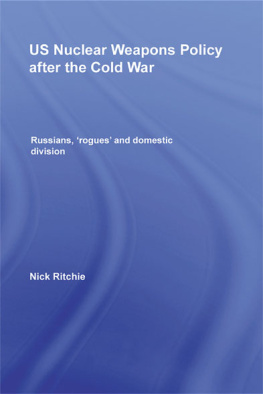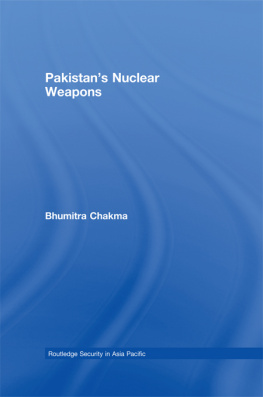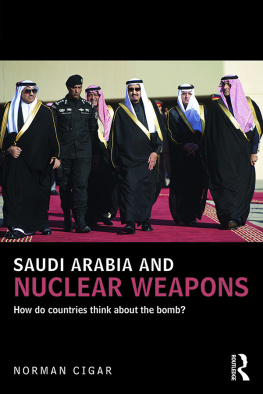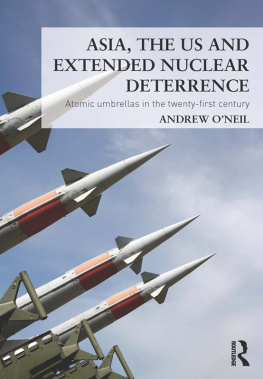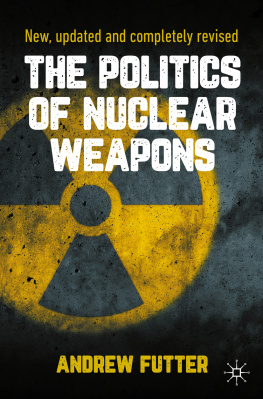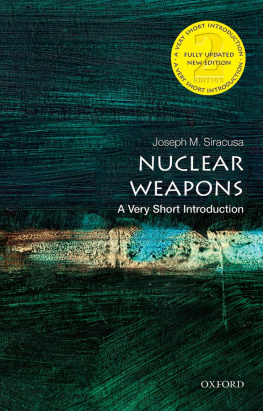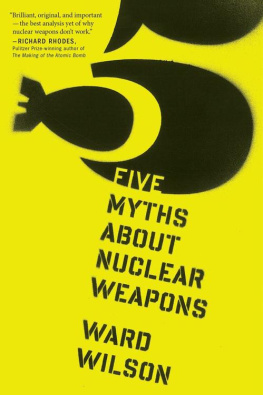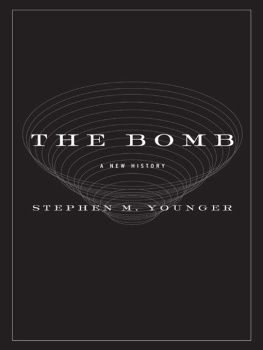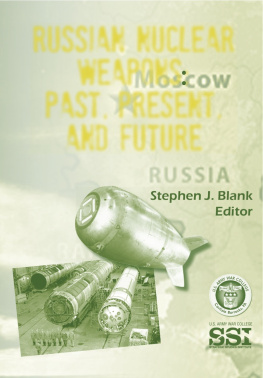Cover
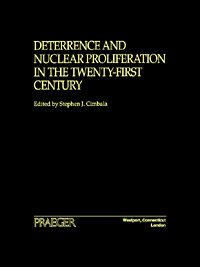
| title | : | Deterrence and Nuclear Proliferation in the Twenty-first Century |
| author | : | Cimbala, Stephen J. |
| publisher | : | Greenwood Publishing Group |
| isbn10 | asin | : | 0275966984 |
| print isbn13 | : | 9780275966980 |
| ebook isbn13 | : | 9780313046667 |
| language | : | English |
| subject | Deterrence (Strategy) , Nuclear weapons, Nuclear weapons--United States, United States--Military policy, World politics--21st century. |
| publication date | : | 2001 |
| lcc | : | U162.6.D48 2001eb |
| ddc | : | 327.1/747 |
| subject | : | Deterrence (Strategy) , Nuclear weapons, Nuclear weapons--United States, United States--Military policy, World politics--21st century. |
Page i
DETERRENCE AND NUCLEAR PROLIFERATION IN THE TWENTY-FIRST CENTURY
Page ii
This page intentionally left blank.
Page iii
DETERRENCE AND NUCLEAR PROLIFERATION IN THE TWENTY-FIRST CENTURY
Edited by Stephen J.Cimbala

Page iv
Library of Congress Cataloging-in-Publication Data
Deterrence and nuclear proliferation in the twenty-first century / edited by Stephen J.Cimbala.
p. cm.
Includes bibliographical references and index.
ISBN 0-275-96698-4 (alk. paper)
1. Deterrence (Strategy). 2. Nuclear weapons. 3. Nuclear weaponsUnited States. 4.
United StatesMilitary policy. 5. World politics21st century. I. Cimbala, Stephen J.
U162.6.D48 2001
327.1747dc21 00038526
British Library Cataloguing in Publication Data is available.
Copyright 2001 by Stephen J.Cimbala
All rights reserved. No portion of this book may be
reproduced, by any process or technique, without the
express written consent of the publisher.
Library of Congress Catalog Card Number: 00038526
ISBN: 0-275-96698-4
First published in 2001
Praeger Publishers, 88 Post Road West, Westport, CT 06881
An imprint of Greenwood Publishing Group, Inc.
www.praeger.com
Printed in the United States of America

The paper used in this book complies with the
Permanent Paper Standard issued by the National
Information Standards Organization (Z39.481984).
10 9 8 7 6 5 4 3 2 1
Page v
Contents
Introduction | |
| Relating Nuclear Weapons to American Power
George H.Quester | |
| Rethinking Deterrence: A New Logic to Meet Twenty-First Century Challenges
Lewis A.Dunn | |
| Post-Cold War Nuclear Scenarios: Implications for a New Strategic Calculus
James Scouras | |
| Russian-American Nuclear Stability Issues: Opportunities and Risks in the Twenty-First Century
Frederic S.Nyland | |
| Proliferation and Pragmatism: Nonproliferation Policy for the Twenty-First Century
William C.Martel | |
| Triage of Triads: Does the United States Really Need Three Strategic-Retaliatory Forces?
Stephen J.Cimbala | |
| Conclusion
Stephen J.Cimbala | |
Page vi
Suggestions for Further Reading | |
Index | |
About the Editor and Contributors | |
Page 1
Introduction
Scholars, policy analysts, and government officials have engaged in a great debate since 1991 about the future of nuclear weapons in world politics. This debate has special significance for the United States at the end of the Cold War and the beginning of a new century. The United States was the first country to enter the nuclear age and the first to use nuclear weapons in war. Nuclear weapons helped to make the United States one of the worlds two military superpowers throughout the Cold War. The United States relied on its nuclear weapons to deter a Soviet conventional attack on Western Europe, by including European allies within the umbrella of American nuclear protection (although this guarantee did not dissuade the French from going their own way on matters nuclear). Nuclear weapons made the United States, along with Britain, France, China, and the Soviet Union, a member of the club of five Cold War great powers.
The end of the Cold War and the demise of the Soviet Union have called into question all of the assumptions on which U.S. military strategy, and the role of nuclear weapons in that strategy, were based. Contributors to this volume offer diverse perspectives on the role of nuclear weapons in the new world order and on the implications of the new condition for U.S. security policy.
George H.Quester reviews the nuclear history through which we have lived, especially the evolution of U.S. Cold War nuclear strategy and policy. We can derive some insights about the future of nuclear weapons and arms control from a correct understanding of this nuclear
Page 2
history. Quester considers whether, and to what extent, the United States or other states actually benefited from the availability of nuclear weapons in the Cold War years. The asserted benefits of nuclear weapons in the hands of the Americans and their allies, or of those held by the Kremlin, were claims based on the abstract logic of deterrence. U.S. and Soviet nuclear weapons supposedly deterred each other. For the United States and NATO, nuclear weapons were thought to be the equalizers that deterred a Soviet attack on Western Europe despite NATOs apparent inferiority in conventional forces.
However, the U.S.-Soviet nuclear balance was not always one of approximate parity. A perceived imbalance could raise political tensions and exacerbate the management of crises. In the United States, critics of alleged U.S. nuclear inferiority at various times scored points in the domestic policy debate. The end of the Cold War and the Soviet collapse were attributed by some to the U.S. surge in arms expenditures during the 1980s that allegedly bankrupted the Soviet economy. Whether this was historical verity or conservative fable, the peaceful demise of the Soviet imperium left the United States as a singular global superpower. Whereas nuclear weapons served to compensate for Soviet conventional superiority in the Cold War years, the same weapons now became the preferred means by which the prospective opponents of the United States and NATO would seek to offset American superiority in high-technology conventional weapons, as displayed in the Gulf War of 1991.
The nuclear history covered by Quester placed deterrence at the center of U.S. security policy. Lewis A.Dunn argues that with the end of the Cold War, the collapse of the Soviet Union, and the emergence of hostile proliferators armed with weapons of mass destruction (including nuclear, biological, and chemical weapons), it is necessary and timely to rethink the role of deterrence in U.S. security policy. First, the logic of mutual deterrence in U.S.-Russian relations must be supplemented, if not supplanted, by a logic of strategic reassurance. Second, although deterrence will remain an important component of U.S. security policy, its modes of expression and implementation will need to be reoriented from Cold War fixations toward post-Cold War threats. Third, the United States must consider what role deterrrence can play, if any, in preventing subnational or terrorist groups from using weapons of mass destruction (WMD) against U.S. territory, forces, or allies.
Next page

